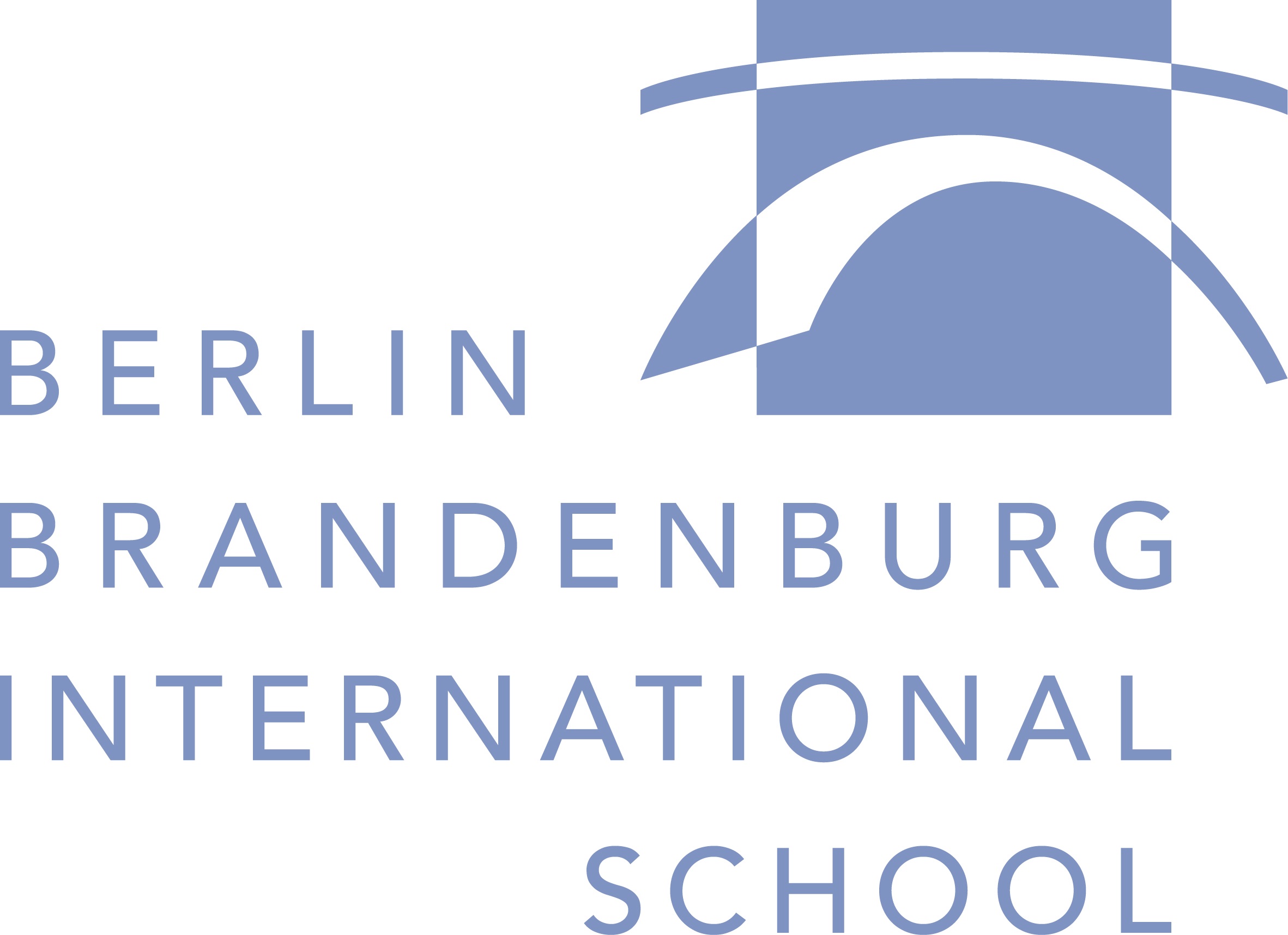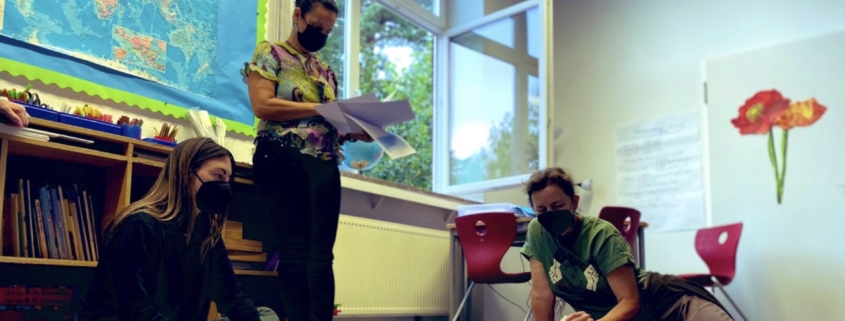Storytelling as a way of mapping student learning
Jonathan Butcher, Primary School Principal
Aisha Kristiansen, EdTech Integrator
Berlin Brandenburg International School
Like any great navigation system, learners, teachers and families need to have a sense of direction, in order to know past, present and future destinations. The ‘OECD Learning Compass 2030’ provides a framework for understanding the learning landscape, so that schools can start to reimagine learning possibilities and empower students to shape a positive future for our world. With this in mind, the Primary School team at Berlin Brandenburg International School have worked incredibly hard to charter the systems and structures that would support this approach to education.

Understanding By Design – Developing Knowledge, Values, Skills and Attitudes
The Primary School’s overarching focus on highly effective teams – and a review of our work as a pedagogical collective – determined that the IB PYP enhancement focus took us beyond a mere redesign of the planner. Instead, we placed team dynamics and effective collaborative planning at the forefront of our efforts. Within this, there were four central drivers:
1. Capitalise on highly effective teams
2. Concept-based inquiry planning
3. Being intentional, identifying critical curriculum areas
4. Getting to the core of documentation
With the help of leading concept-based inquiry thought leaders – Carla Marschall and Rachel French – the school built a shared understanding of the Inquiry Cycle. We developed a backwards by design model, whereby teachers intentionally planned for the development of knowledge, values, skills and attitudes in our learners. As documented by Professor John Hattie in his Visible Learning research, shaping ‘Collective Teacher Efficacy’ meant that we were chartering the learning terrain for our students, and giving our teachers a strong sense of collective purpose and direction. The primary goal of the planners was to provide a rich, transdisciplinary and collaborative story of the learning journey.
Evidence of Learning – Core Foundations
For the planning to be effective, we used the phrase ‘compelling evidence of growth’, as a gold standard of what we wanted to document. The compelling evidence of growth would provide the basis for developing student agency and transformative competencies, so that learning and teaching was both personalised and engaging, and within the zone of proximal development. We started to look closely at student work, in order to gain a shared understanding of achievement and implement future steps. This would allow the teams to plan for intentional action. These conversations had a two-fold effect. Tuning staff into what great learning looks like, whilst consciously planning to make learning visible for our students.
Like any great story, we needed a climax and that came in the form of evidence of impact. Through reviewing the cognitive, health, social and emotional data for our students during rich collaborative planning conversations, the teams received affirmation that they were heading in the right direction. These discussions also provided a catalyst for next steps, so that students were experiencing ‘just right’ learning, resulting in excellent outcomes in growth. This evidence would also be used to create powerful, reflective and highly personalised learning stories.
Partnerships Within and Beyond the Classroom – Capturing and sharing ‘Learning Stories’
By late 2019, our school’s position on the map was clear and the direction was set. We had established a clear purpose for our learning stories, which was for students to build their metacognitive skills to reflect on their journey and to establish strong partnerships beyond the classroom. Evidencing learning was a term that was understood and became widely expected amongst our staff. Capturing compelling evidence of growth, and sharing these stories through Seesaw and our social media channels, provided our families and the community with a window into learning, especially when doors were closed to the outside world.
The Anticipation-Action-Reflection (AAR) cycle of the OECD Learning Compass 2030 states that learning ‘is an iterative process whereby learners continuously improve their thinking and act intentionally and responsibly, moving towards long-term goals that contribute to collective well-being’. Giving students an authentic audience to share their learning improves the quality and impact of their story. It provides a detailed map of their learning journey, so that students can be proud of their travels, whilst engaging in reflective discussions about how to grow. The learning stories also created a platform to celebrate the action part of their learning and ensured student agency.
Reflecting on the Journey
As outlined above, our next step is to ‘zoom in’ on the reflection piece. As Hattie highlights:
There are many misuses of this term (reflection), and it does not mean looking back to where we think we have been. It is more a “disciplined way of thinking” and more often the more powerful notion of reflection is “seeing your learning through others eyes”, seeking and using feedback about progress, checking our cognitive biases (especially confirmation bias), and adjusting our learning to more effectively attain the expectations developed in the anticipation phase.
Supporting our students to take an ‘outsider looking in’ approach to their learning will continue to enhance the quality of student learning and achievement. Similar to intentional planning, compelling evidence of learning and rich learning stories, this next developmental phase will take a shared agreement and collective effort by our team. The work has already been piloted with our Early Education students through the ‘Growing Up Project’. For this initiative, our youngest learners are being challenged to create new value, reconcile tensions and dilemmas, and take responsibility within an ethical framework. It is grounded in Hattie’s view of true and authentic reflection. This project has been shortlisted for the Ethical Values Category for the International Schools Awards. For more information about the project, please visit – https://iscresearch.com/international-school-awards/ethical-values/
And of course, embedded throughout this journey is a strong focus on high quality feedback, but perhaps that’s a story for another time…
Berlin Brandenburg International School is the ECIS Member School of the Month for January.

LEARN MORE
BIBLIOGRAPHY
OECD Future of Education and Skills 2030. “The OECD Learning Compass 2030.” Organisation for Economic Cooperation & Development, https://www.oecd.org/education/2030-project/teaching-and-learning/learning/
Hattie, John, “Collective Teacher Efficacy (CTE) according to John Hattie.” Visible Thinking,
https://visible-learning.org/2018/03/collective-teacher-efficacy-hattie/
Hattie, John, “Thought Leader Written Statement.” Organisation for Economic Cooperation & Development,
What do you think about the points raised in this post? We’d love to have your thoughts below.


ABOUT THE AUTHORS
Jonathan Butcher holds a M.Ed in International Education, and continues to learn how to maximise learning through meaningful projects. At a time where the world needs compassion, innovation, and action, he is committed to working with others to call for Education for Sustainable Development. Jonathan is the Primary School Principal at Berlin Brandenburg International School.
Aisha Kristiansen holds a M.Ed in Leadership and Gifted & Talented Education. She has worked in a range of curriculum and leadership roles, which have focused on placing students at the centre of the learning process. She is currently working as the EdTech Integrator at Berlin Brandenburg International School.





Trackbacks & Pingbacks
[…] Source link […]
Leave a Reply
Want to join the discussion?Feel free to contribute!